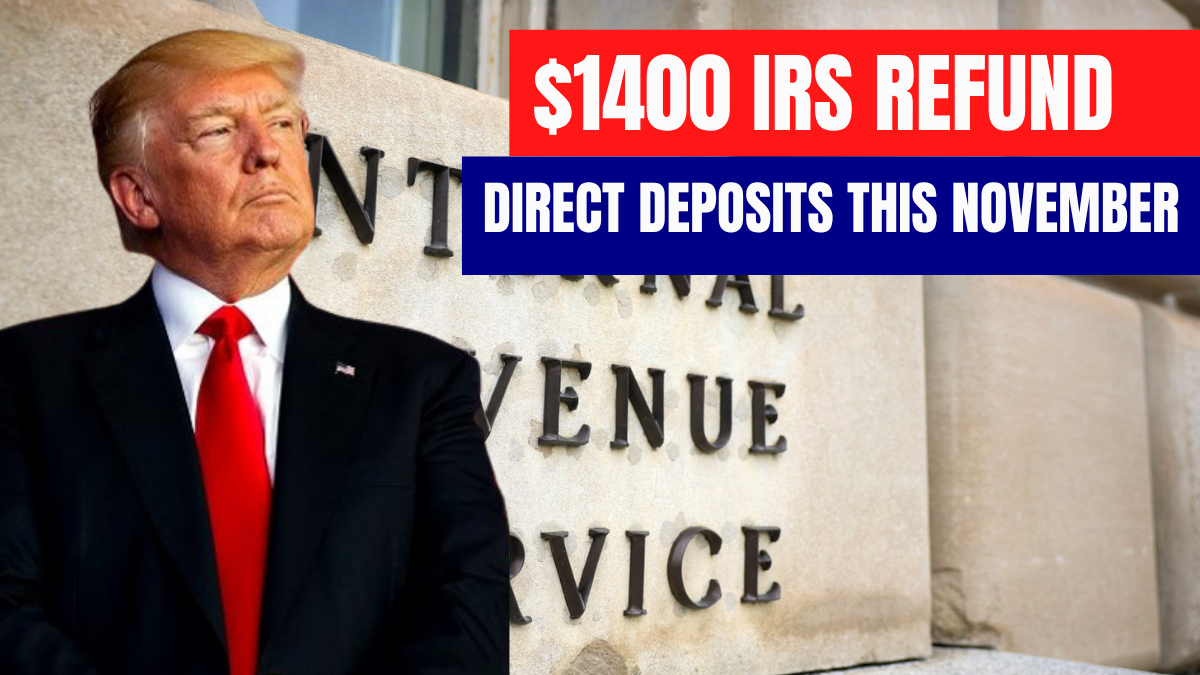The $1,400 IRS direct deposit, a one-time automatic payment has been announced to 1 Million eligible taxpayers who had not or were not able to claim the Recovery Rebate Credit (RRC) on their 2021 tax returns. This will be benefitting approximately 1 Million US tax payers by certain estimates and will be bringing in relief to US citizens.
These payments are not a new broad stimulus check program for 2025, but rather a corrective payout to make sure eligible taxpayers receive the credits they already qualified for.
Why Was This Payment Issued?
During the pandemic the federal government issued multiple rounds of economic impact payments (stimulus checks) and later allowed eligible taxpayers to claim the Recovery Rebate Credit on their tax filing if they had missed or received less than the full amount. The IRS discovered that approximately one million taxpayers had not claimed the RRC for tax-year 2021.
To address this, the IRS announced automatic payments of up to $1,400 will be made to those taxpayers—without requiring them to file additional forms. Direct deposit is the preferred method if valid bank information is on file.
Who Is Eligible for the $1,400 Payment?
Eligibility is restricted to taxpayers who:
- Were eligible for the Recovery Rebate Credit for tax-year 2021 but did not claim it on their return.
- Filed a 2021 tax return (or later filed) and left the RRC field blank or zero-claimed when they should have claimed.
- For those who did not file for 2021, the IRS also allowed a filing window (see next section) to claim the credit.
It’s important to note that this is not automatic for all taxpayers; only those who missed this specific credit and met IRS criteria appear eligible.
How and When the Direct Deposit Was (or Will Be) Made
The IRS planned the payments as follows:
- The payment amount is up to $1,400 per individual depending on eligibility.
- Payments were to begin in December 2024 and into January 2025, with most direct deposits going first for those with valid banking information on file.
- If the IRS did not have valid bank info or if an account was closed, the payment may be reissued via paper check mailed to the address on file.
Because of this structure, many eligible taxpayers should have already received their payment—or a notice—by early 2025.
Deadline and Important Dates
A key deadline to keep in mind:
- For taxpayers who did not file a 2021 return and were eligible, the IRS set April 15 2025 as the deadline to file for tax-year 2021 and claim the RRC. After that deadline, the opportunity to obtain the credit is forfeited.
- If you already filed the 2021 return and were eligible, the automatic payment process applies and you don’t need to file again solely for this credit.
If you believe you were eligible and didn’t receive the payment, reviewing your 2021 return or your IRS account transcript may help determine your status.
What to Do If You’re Eligible But Haven’t Received It
If you believe you should have received the payment but have not:
- Check your tax-year 2021 return (or file if you haven’t) for the RRC.
- Verify your bank account information with the IRS or ensure the IRS had valid direct-deposit info on file for you.
- Use the IRS “Where’s My Refund?” tool, or access your online IRS account to verify refunds and credits.
- Keep an eye out for an IRS letter notifying you of the payment—payments eligible for the RRC are accompanied by a notice-CP12 or similar.
- Be vigilant about scams: Any text/emails claiming a “$1,400 stimulus payment” that require you to provide personal or banking information are almost certainly fraudulent.
If in doubt, consult a tax professional or contact the IRS directly through official channels.
Common Misunderstandings and Scam Warnings
Misunderstandings
- Some taxpayers believe this is a new “stimulus check” program for 2025—it is not. The payment is tied to the 2021 taxable year and the Recovery Rebate Credit, not a new relief measure.
- The amount “up to $1,400” is per individual; households may have different amounts depending on eligibility and filing status.
Scam Warnings
- The IRS does not text or email people asking for banking information or claiming you must pay to get your payment.
- If you receive unsolicited communications urging you to “click a link” or “verify your bank account” for a $1,400 payment, treat it as suspicious and verify via IRS.gov.
- Always go directly to the official IRS website (irs.gov) rather than clicking through unknown links.
Why This Payment Matters
- For taxpayers who missed previous relief, the automatic $1,400 payment offers compensation they were eligible for but didn’t receive.
- The use of direct deposit accelerates delivery, reduces risk of mail delays or lost checks, and lowers administrative burden for both taxpayers and the IRS.
- The approach reflects a broader shift toward streamlined automatic credit-delivery systems when possible, especially for targeted relief.
Key Takeaways
- This $1,400 direct deposit payment is not a new stimulus program—it is a corrective distribution for those eligible for the Recovery Rebate Credit for tax-year 2021.
- Eligible taxpayers will receive up to $1,400 via direct deposit (if banking info is on file) or by mailed check.
- If you filed your 2021 tax return and left the RRC blank but were eligible, you may receive this payment automatically. If you did not file, the April 15 2025 deadline was critical.
- Always verify your status via IRS.gov, avoid unofficial messages or solicitations, and update your banking info if you’re eligible and expecting funds.
